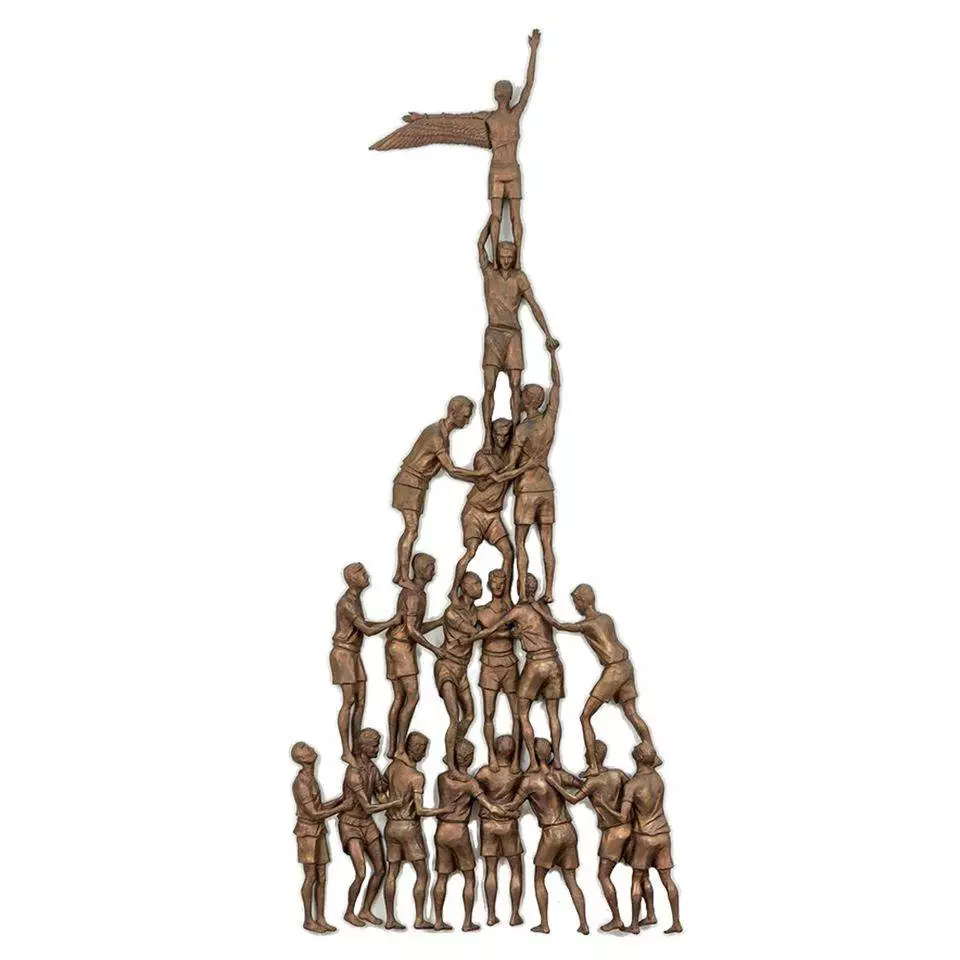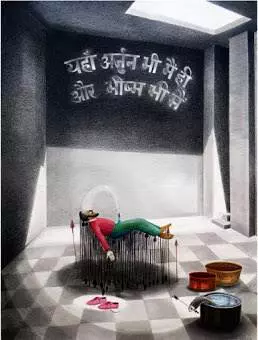Human Pull by Gigi Scaria
96” x 41” x 5.5”
Bronze Sculpture
every line bears this weight
clumsy truth, crucifix-like
and in bearing alone, they are born
up and sing
on the wings of those demons we’ve seemingly seen
to be
descending
one ladder inverted
where once Jacob had torn
down his alter
in anger, in the dry place where we left the vision
– Justin Aptaker
Gigi Scaria is a New Delhi based Visual Artist, born in southern Kerala in 1973. He graduated from Jamia Millia Islamia, New Delhi, with a Masters Degree in Arts (Painting). His experience of moving from a relatively small town to a metropolis like New Delhi informs a lot of his art. With a wide range of mediums, his work often contemplates the effects of Social Hierarchy and a fast paced Urban Life on the individual and collective human consciousness. He was one of those selected to represent India during India’s debut in the Annual Venice Biennale in 2011.
Human Pull is a bronze sculpture, represented through figurines in the acrobatic and laborious Dahi Handi (A prominent festival in India) climb. It was originally showcased in his exhibition ‘Ecce Homo: Behold the man’, titled from German philosopher Nietzsche ’s book, Ecce Homo: ‘How One Becomes What One Is’. Works on display are meant to dissect and display Human Connections, prejudices and experiences in a bustling society or city. This particular sculpture can be hung on a wall, in the artist’s preferred High Relief style, and showcases multiple male figures climbing on top of each other and a man with one wing and an extended arm stands atop the Human Pyramid. Taking about 5 months to complete, it does seem to symbolise the Rat Race that most urban dwellers are stuck in, knowingly or unknowingly.
The most ironic thing in the Human Pull is that the supposed winner, with a wing that almost makes this figure feel destined for greatness, is grasping at nothing but thin air. It does pose a perturbing question: what if there is nothing at the end of the tunnel and what if our struggle was for naught? Scaria believes this work is autobiographical: representing some of his own deep seated insecurities.
Explore more artworks that we have curated for you:





